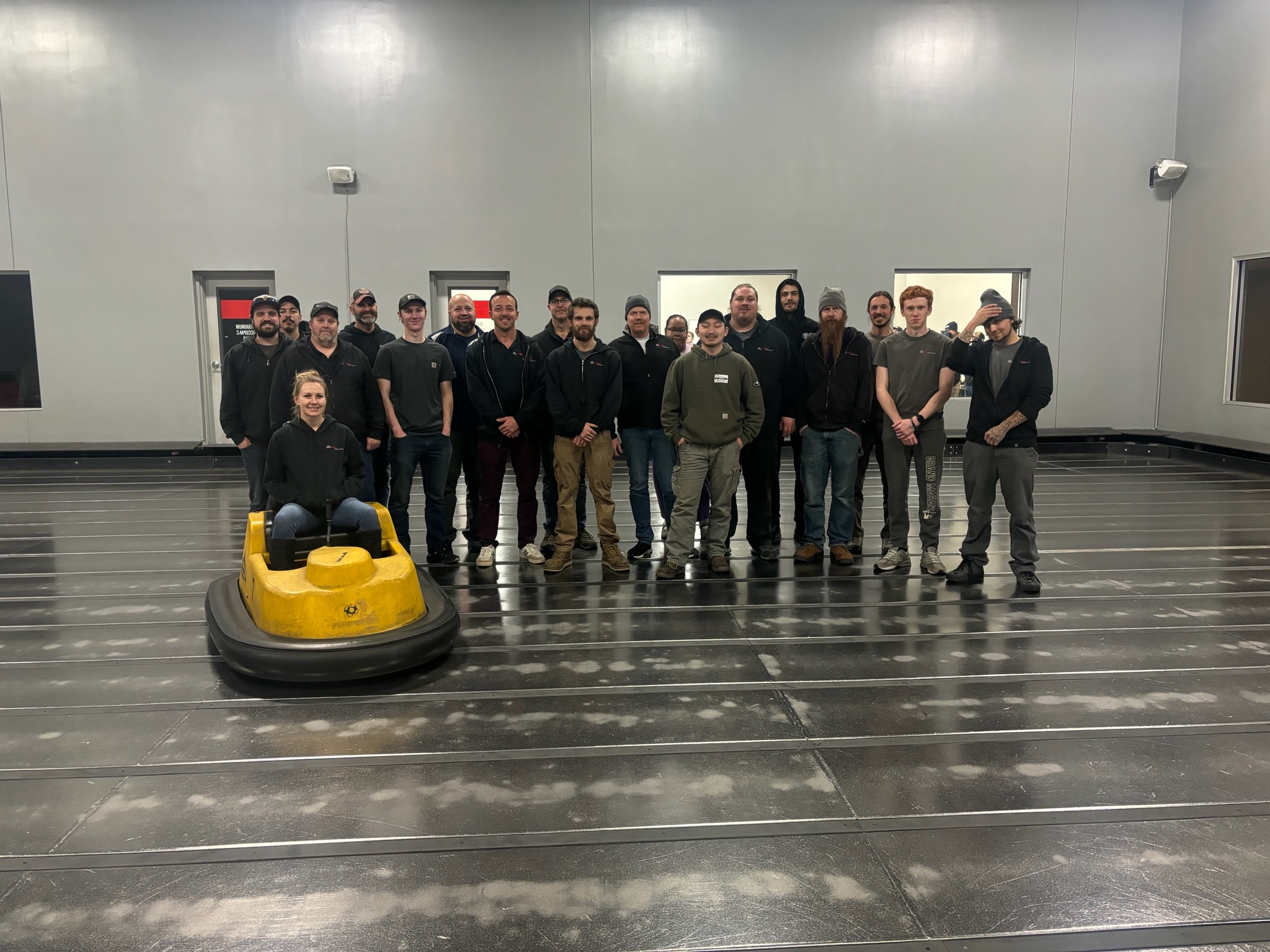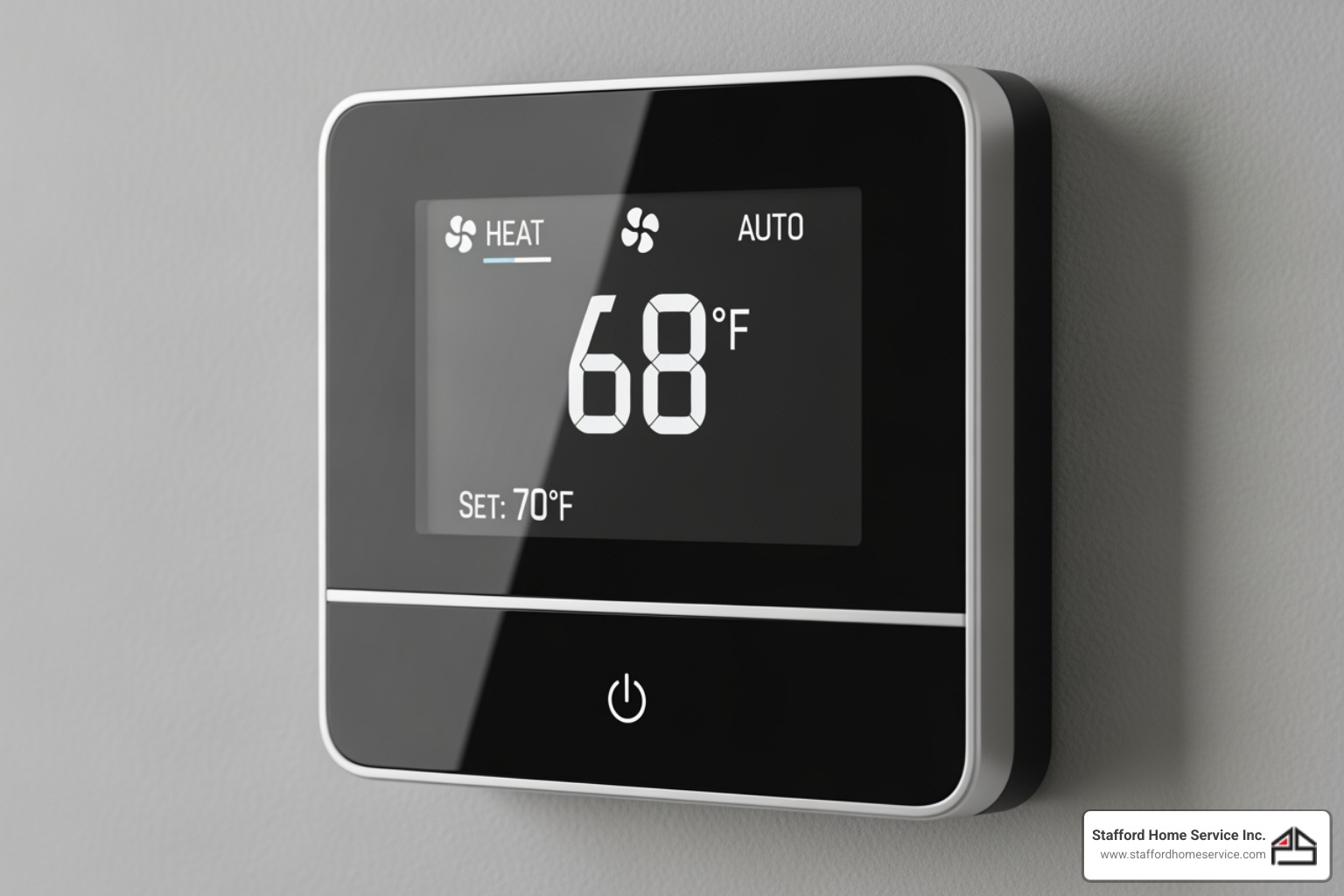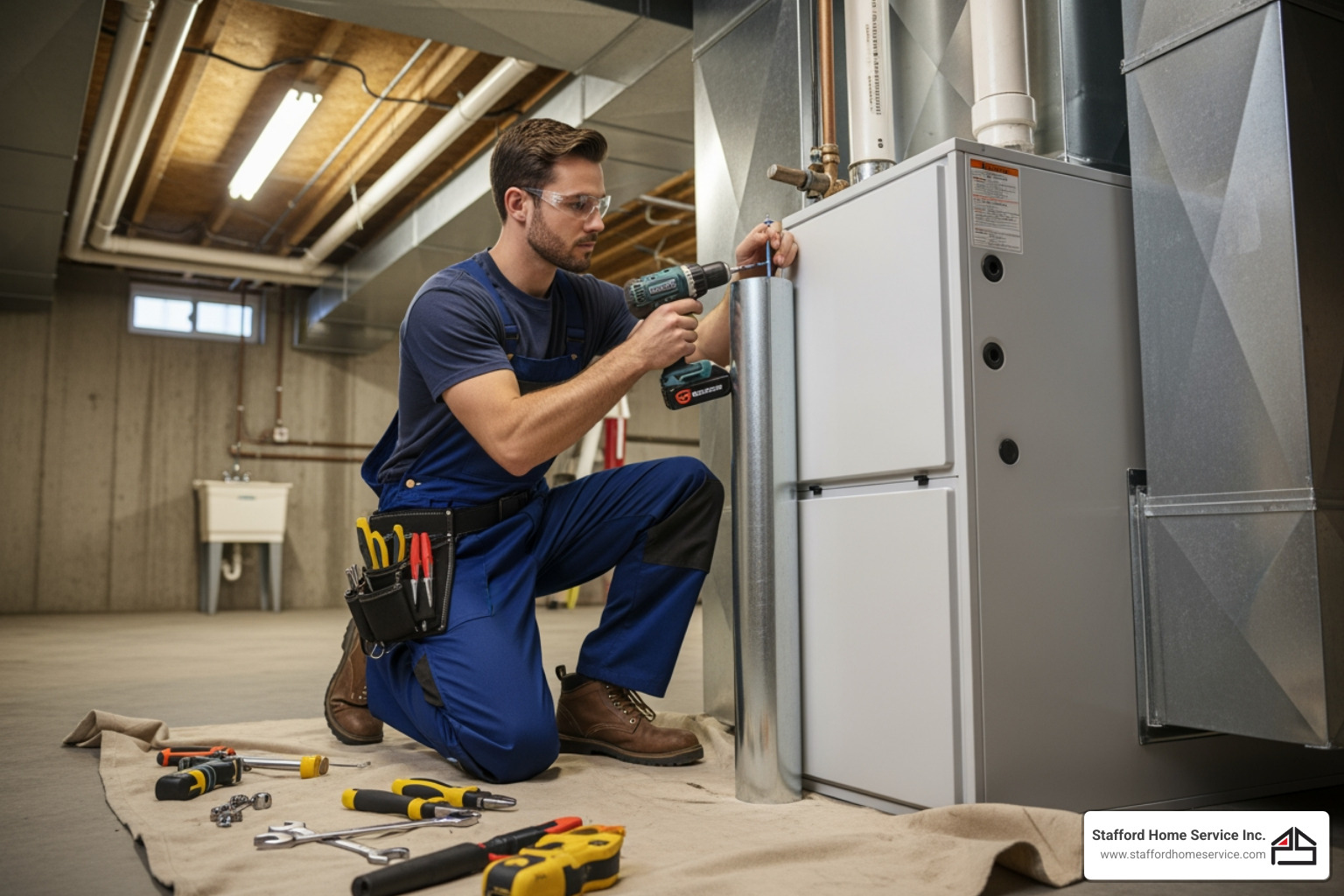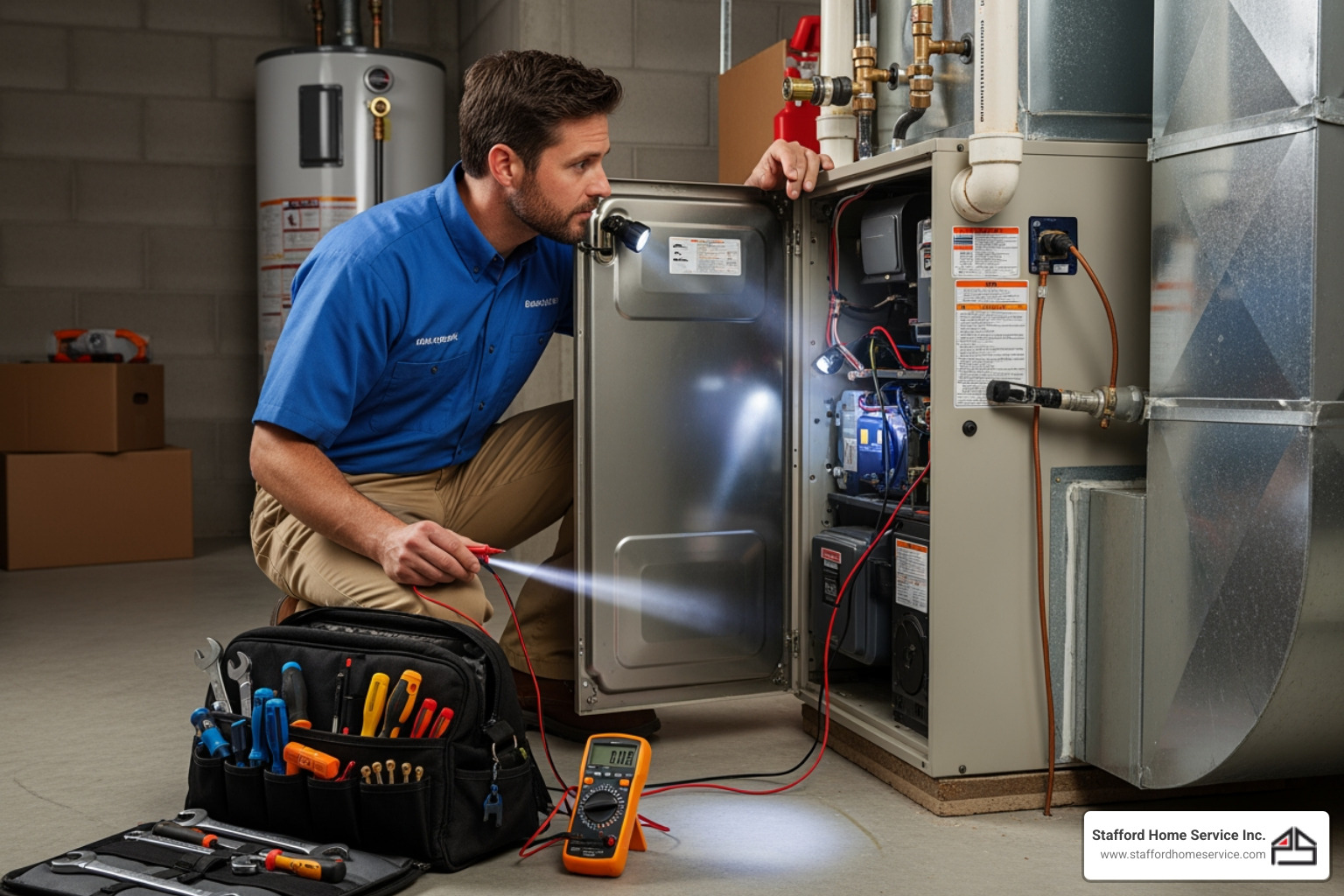Frequent GFCI Outlet Tripping in Minneapolis: Causes and Solutions
Dealing with a GFCI outlet that keeps tripping can be frustrating, especially when it interrupts daily routines in your Minneapolis home. Whether it is the bathroom losing power mid-morning or the kitchen outlet cutting out while cooking, frequent tripping can point to bigger electrical issues that need attention. Residents often overlook these signs or dismiss them as minor problems, but they may reflect wiring faults or moisture exposure that could pose serious safety risks.
GFCI outlets are required by code in certain areas of the home because they are designed to protect you from electrical shock. But if the same outlet keeps shutting off, it should not be ignored. Understanding why it is happening can help prevent future problems, extend the life of your electrical setup, and keep your home safer.
Understanding GFCI Outlets
GFCI stands for Ground Fault Circuit Interrupter. These outlets are different from standard outlets because of their built-in sensor that monitors the flow of electricity. If it detects any imbalance or unintentional electrical path to the ground, even a small one, it cuts power in a split second. This feature is especially useful in areas where water and electricity are close together, like kitchens, bathrooms, garages, or outdoor spaces.
GFCI outlets protect you by shutting off electricity before a shock can occur. They are a significant improvement over old outlets that do not detect faults. In homes throughout Minneapolis, current code requires these outlets in areas where moisture is likely. If your home does not have GFCI outlets in those areas or they are not working correctly, that may be the first thing to address.
When working as intended, GFCI outlets support safer electrical use and reduce the risk of accidents. But when they trip too often or without any clear cause, it means the outlet is performing its safety function—yet other problems may exist.
Common Causes of Frequent GFCI Outlet Tripping
When an outlet trips repeatedly, there is usually a consistent cause. Pinpointing it early helps avoid worsening problems and leads to an effective solution. Common reasons include:
- Moisture intrusion – Damp areas like kitchens, laundry rooms, and bathrooms are high-risk zones. Even a small splash or humid condition can cause a GFCI to trip.
- Worn-out or faulty appliances – Plugged-in equipment that is damaged or deteriorating can produce uneven electrical flow that triggers the GFCI protection.
- Overloaded circuits – Plugging too many devices into one circuit can put stress on your system and cause unnecessary trips.
- Wiring problems – Loose connections, outdated installations, or poor grounding can confuse the outlet sensor and lead to frequent resets.
One Minneapolis homeowner noticed the outlet only tripped after using the toaster and coffee maker at the same time. It turned out that both were plugged into the same circuit, and their combined use slightly exceeded the available load. Cases like this show how small everyday habits may reveal bigger electrical concerns.
If your outlet keeps shutting off, do not ignore it. More often than not, the outlet is functioning as intended, but the cause behind its behavior needs to be addressed before the issue worsens.
Troubleshooting GFCI Outlet Problems
If a GFCI outlet keeps cutting power, there are a few details to check before replacing it. Begin by isolating the potential cause. Unplug anything connected to the outlet and reset it by pressing the reset button located between the prong openings. If power returns and stays on, plug devices back in one at a time to narrow down the cause.
Here is a basic list to follow when troubleshooting a GFCI outlet in your Minneapolis home:
1. Press the reset button. You should hear a click, and power should return.
2. If it does not reset, or resets but immediately trips again, there may be water intrusion or faulty wiring.
3. Inspect nearby areas for signs of moisture, especially in bathrooms, kitchens, garages, or on exterior walls.
4. Plug in different appliances one at a time to determine if they are causing the trip.
5. If other outlets or lights on the same circuit are affected, the issue may involve the full circuit, not just the GFCI outlet.
Some GFCI outlets are wired to protect other outlets further down the line. If one GFCI trips, multiple outlets may shut off. That can make tracking the issue more difficult without proper testing tools.
If the outlet continues to trip with nothing plugged in, that most often points to a deeper issue such as aging wiring, a problem with the breaker, or something malfunctioning inside the wall. These conditions should be handled only by trained professionals.
Preventive Measures to Avoid Frequent GFCI Trips
Once you fix the immediate issue, a few good habits can help prevent the problem from coming back. Keeping the area surrounding your outlets completely dry is one of the most effective ways to stop unwanted tripping. Water exposure remains the most common reason for GFCI shut-offs.
Make sure all appliances are in safe condition before plugging them into a GFCI outlet. Each appliance should have a well-protected cord, tightly sealed plug, and casing free of cracks or defects. Old cords and exposed wiring can activate safety responses even if the item appears to function.
Another potential issue is poor or incorrect installation. GFCI outlets need to be grounded, matched with the appropriate wire alignment, and properly secured. If installed incorrectly, they often fail to work the way they should—or trip even when no problem is present.
Tips for keeping outlets reliable include:
- Keep areas around sinks and tubs dry
- Avoid plugging heavy appliances into GFCI outlets unless circuits are rated to handle them
- Do not overload power strips or daisy chain too many devices
- Replace any outlet that feels hot or is discolored
- Have a licensed electrician perform periodic checks on your system
Professional Electrical Solutions in Minneapolis
If your GFCI keeps tripping and none of these checks help, it may be time to bring in professionals. Some wiring issues in older Minneapolis homes are buried inside walls or linked to multiple changes made over years of renovation. These hidden faults can cause hard-to-diagnose circuit trips.
When a reset does not solve the problem, one of our technicians can inspect your system for deeper issues. A GFCI placed in the wrong part of the circuit, loosened or damaged wiring, or a long daisy chain of outlets can all cause the sensor to trip unnecessarily. Our team can pinpoint the exact issue using proper testing methods.
Electrical outlet installation in Minneapolis, particularly for GFCI models, needs to be done correctly to remain dependable. That includes making sure each outlet is grounded, each wire is connected in the correct position, and the circuit breaker matches the demand of the outlets on that run.
If you are still battling frequent trips from a GFCI outlet, avoiding future risk should be the next move. Leave installation and in-depth checks to trained professionals equipped to handle the full picture.
Ensuring Electrical Safety in Your Minneapolis Home
All home electrical systems need occasional attention. Just like appliances, outlets and wiring do not last forever. Modern homes demand more power today than they did even just a decade ago, and parts of your system may be outdated or strained without showing obvious signs.
GFCI outlets can help prevent injury and damage, but they are just one part of an overall setup that must work properly across an entire circuit. Circuit breakers, wire types, load distribution, and general wear all influence the safety and performance of outlets.
Regular electrical inspections are a good idea if you have noticed tripping outlets, flickering lights, or strange sounds around switches or panels. These signs often occur before larger faults present themselves. Our professionals can check for these problems and recommend any needed repairs or upgrades to keep your Minneapolis home safe and stable.
Reliable electrical service starts with small steps. Replacing older outlets, confirming that breakers and circuits are balanced, and addressing early signs of wear go a long way toward preventing emergencies.
Frequent GFCI trips should always be taken seriously. Even if the outlet resets easily, having the issue happen over and over again means there is a problem that needs correction.
If your home in Minneapolis is experiencing persistent outlet tripping, addressing potential issues with electrical outlet installation in Minneapolis could be the key to improving safety and performance. At Stafford Home Service Inc, our licensed technicians are ready to assess your system and provide reliable solutions tailored to your needs. For a quick estimate or to book a service visit, please contact us today.
Customer Testimonials
Our customers consistently praise our knowledgeable technicians, prompt service, and the lasting quality of the work we deliver.
ABOUT STAFFORD HOME SERVICE
In 2007, long-time team members Kris Thompson and Dan Fournier took ownership of Stafford Home Service. With over 60 years of combined expertise in residential electrical and HVAC, they continue the legacy of former owners Curt Cervin and Paul Stafford—delivering quality workmanship and complete customer satisfaction.
70+ Years
Family-operated experience delivering trusted electrical, heating, and cooling services.
800+
Verified 5-star reviews from satisfied customers.










